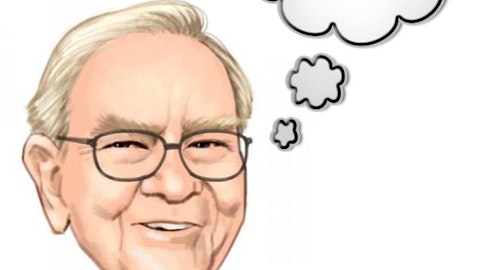Matthew J. Flannery: Yes. As we’ve gotten bigger, to be fair, the years — the year quarters of Q1 and Q4 have to get a little bit bigger, just to be fair to the branches that have to process it and our partners that have to deliver it. So we think more like in that 15% to 20% range is kind of our new norm in Q1. That will still be a down year by the way, I believe. But we’re flattish. But the difference is we didn’t bring in that load in Q4. So think about the cadence, what we’d say more in that 15% to 20% range in the outside quarters of Q1 and Q4, and it would depend Q4 be the bigger variable to depend on what the year looks like. And then about two thirds of our CAPEX in those middle quarters is kind of the way to look at it without being exact, right, because we couldn’t even forecast exactly if we want to do, but that’s the way we think about it.
William Ted Grace: So Seth, just to your question on the first quarter, if you go back to the strategy we had to implement last year, we took down certainly 20-plus percent of our full year CAPEX in the first quarter. I think it was 22%, 23%. It’s about $800 million. So if you think the CAPEX is fractionally up this year, but you’re going to have a smaller fraction. People should be thinking the CAPEX landed will be down because of the unusual actions we had to make in the fourth quarter of 2022 and the first quarter of 2023, given the supply chain challenges we faced.
Seth Weber: Yes. That’s exactly right. Okay. I appreciate that. And then maybe just can you dimensionalize some of this mega project commentary, kind of maybe just talk to where you think we are in that process, are these projects starting to move forward and are you like seeing shovels and dirt on these projects? There’s a lot of debate around this stuff and just a lot of, I think, skepticism that some of these projects are going to go forward and can you just talk to just sort of the rate of activity that you’re seeing on those projects, maybe even touch on just sort of the competitive environment for United to win those projects or anything you can give to help us get comfortable that those projects are moving forward and will be an impact in 2024? Thanks.
Matthew J. Flannery: Yes, certainly. Yes. And first of, there’s not any skepticism from our perspective. So we’re [Multiple Speakers]. No, no, no. These jobs — because we have more visibility to this because of the planning that’s required, frankly, than we do the local market business. So we actually feel really solid about our prospects on the large projects. And I think most of our peers that can participate in that, I think the nationals do as well. And I think you’ll continue to hear that commentary. But their projects are ongoing right now. Some of the largest projects we’ve ever been on. I have gear on them today and did in at least back half 2023, but this is a multiyear tailwind. I know we’ll use, for example, people talk, there’ve been a lot of talk about EVs. There hasn’t been an EV cancellation yet.
So I think one project was rescoped, a little smaller and one was paused because environmental needs and now is back online. So we really aren’t seeing a few delays for just idiosyncratic reasons, but we’re not seeing cancellations at all in the major projects. And then as I mentioned earlier, there’s a lot of LNG work that’s coming. We think the Infrastructure Bill isn’t at risk. That was regardless of what happens with the election. That was bipartisan support fully and more importantly, we really need it as a country. And then the IRA, which is more longer-term, I guess that’s the one you could debate, but that’s got a longer tail to it and one that hasn’t even manifested yet. But the tailwinds that we’ve been discussing are showing up in our business today, and we expect to for multiple years.
Seth Weber: Okay. And can you — is there anything you’d add on win rate or how successful you guys have been on getting these projects?
Matthew J. Flannery: No. We view that as competitive, and it’s not something that we will discuss. All I can say is we’ve been the largest provider of equipment to national accounts and the people that do these type of jobs for many, many, many years, long before mega projects became a new term. So we feel good about our position.
Seth Weber: Got it, okay, thanks guys. Appreciate it.
Operator: Thank you. Our next question comes from Nicole DeBlase with Deutsche Bank. Please go ahead.
Nicole DeBlase: Yeah, thanks. Good morning guys. So a lot of ground has been covered here. I just wanted to ask one that I had left on used equipment sales. So another year of kind of higher than normal used equipment sales you guys are forecasting. I guess any thoughts on how long that elevated level of investment will last? And can you also talk about the expected mix of wholesale versus auction in 2024? Thank you.
William Ted Grace: Yes. So not knowing the context exactly how you think about that data. I mean, to us, that replacement that OEC sold is right in line with where it should be from an RUL perspective. So while the numbers are bigger, it’s on a bigger base. So that replacement cycle is driven by a very systematic approach to how we manage the fleet and returns. So I’m not sure — we can dig into this further, Nicole, but it’s tough to know exactly how to interpret that question on that basis. So we feel good about that. In terms of channel mix, we’d expect to kind of go back to that normal distribution. These are rough numbers. But over time, you’d see something like two thirds going through retail, you would see something like 20-ish or so going to trade packages, you’d see low doubles in broker, and that would leave auction in kind of that mid-single digit.
If you compare that to 2023, really, the big difference was we used auction to clear out some of that Ahern inventory we talked about, especially in the second half. You would have seen that margins. You would have seen that in the recovery rates too. So I don’t know if that helps answer the second part. Did I miss anything?
Matthew J. Flannery: No, I would just add, Nicole, when you think about the — let’s use the recovery rate, right, as a percentage of OEC. As you could see from what we’re forecasting that number is coming down off historical highs but still above the mid-50s that we used to talk about. And we do think that as new equipment pricing continued to rise that acts as a bit of an umbrella of coverage. So we don’t think we’re going all way back to mid-50s nor is that implied in this guidance. So we still think somewhere in between the low 70s where things peaked up to the historical mid-50s is where we think we’ll level out.
William Ted Grace: It’s never good to correct your boss, but more like 50 to 55.
Nicole DeBlase: Thanks guys. I appreciate that.
Operator: Thank you. Our next question comes from Ken Newman with KeyBanc Capital Markets. Please go ahead.




